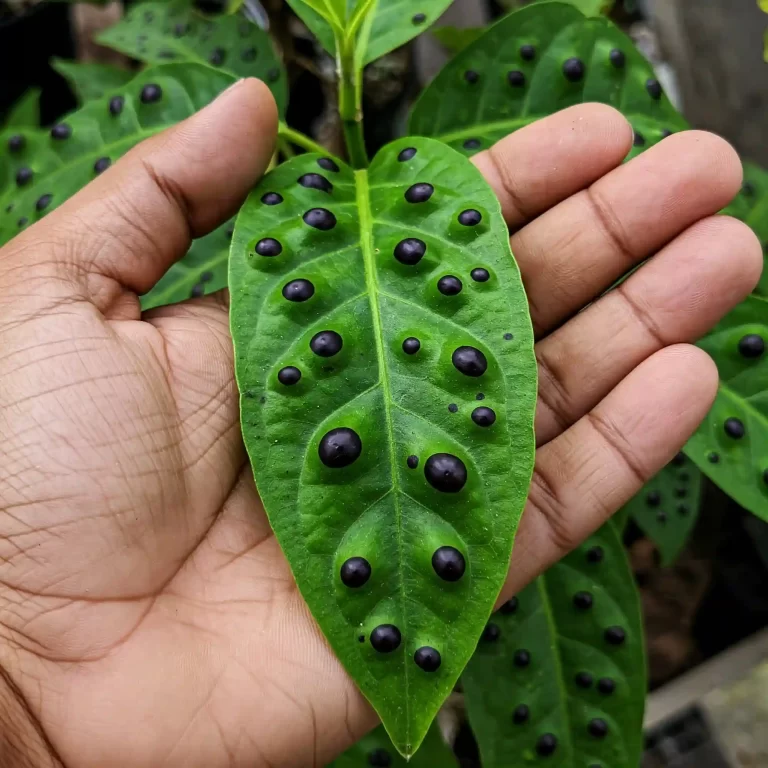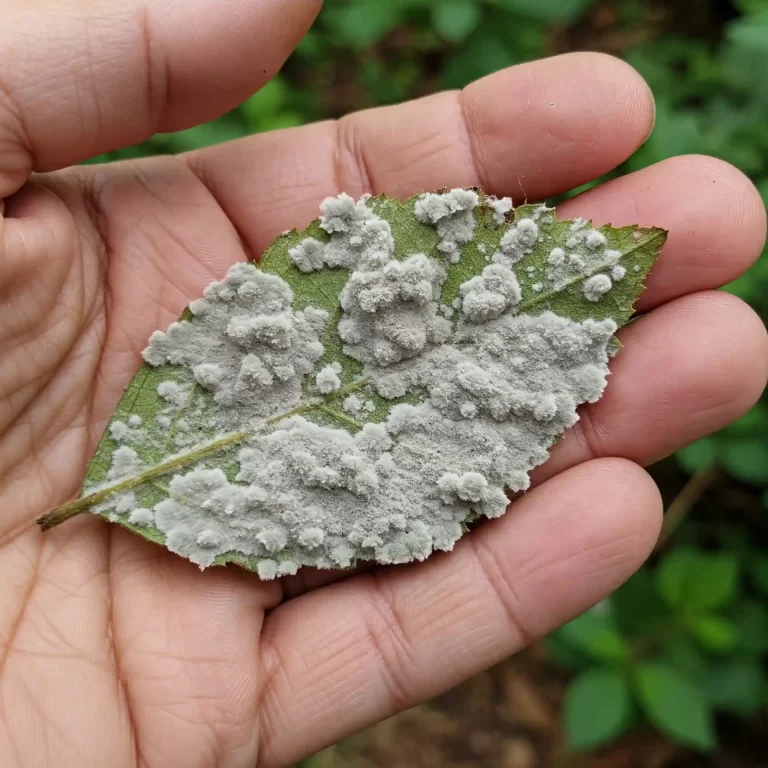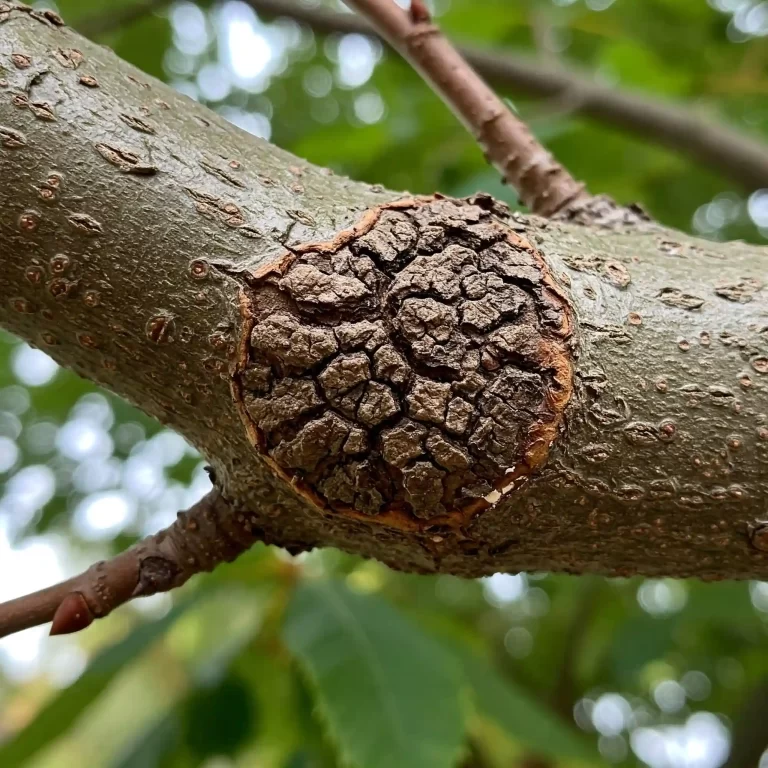Have you noticed your prized tomato plants suddenly wilting under the summer sun, their stems showing dark, unsightly lesions? You’ve nurtured them, watered them, and yet, they’re succumbing to an unseen enemy. This is the dread of charcoal stem rot, a fungal disease that can turn your garden dreams into a nightmare. It’s disheartening to watch your hard work wither away, isn’t it? I understand the frustration, the feeling of helplessness as you try to rescue your plants. But here’s the good news: you can take control. By understanding the nature of charcoal stem rot and implementing effective strategies, you can protect your garden and ensure a healthy, bountiful harvest.
What is Charcoal Stem Rot?
Charcoal stem rot, a dreaded plant disease, is caused by the soil-borne fungus Macrophomina phaseolina. This insidious pathogen can wreak havoc in gardens and agricultural fields, leaving a trail of wilted and dying plants in its wake. Understanding the nature of this disease is crucial for effective prevention and management.
The Culprit: Macrophomina phaseolina
Macrophomina phaseolina is a resilient fungus that thrives in warm, dry conditions. It’s a master of survival, producing microscopic structures called sclerotia. These sclerotia are like tiny, dormant seeds, capable of surviving in the soil for years, even decades, waiting for the right conditions to emerge.
How the Fungus Attacks:
When environmental conditions are favorable, particularly during periods of heat stress and drought, the sclerotia germinate. The fungus then invades the plant’s vascular system, disrupting the flow of water and nutrients. This disruption leads to the characteristic wilting symptoms that are often the first sign of infection.
Recognizing the Symptoms:
Identifying charcoal stem rot early is crucial for effective management. Here are some key symptoms to watch for:
- Sudden Wilting: Plants may suddenly wilt and droop, even when the soil appears adequately moist. This occurs because the fungus obstructs the plant’s ability to transport water and nutrients.
- Stem Lesions: Dark, sunken lesions often develop on the stems of infected plants, particularly near the soil line. These lesions may appear reddish-brown or black in color.
- Root Rot: The roots of infected plants may exhibit signs of rot, appearing discolored and decayed.
- Leaf Discoloration: Leaves may turn yellow or brown and eventually drop prematurely.
- Black Specks: In severe cases, tiny, black specks may be visible on the infected plant tissues. These specks are the sclerotia of the fungus, giving the disease its name “charcoal stem rot.”
Environmental Factors that Favor the Disease:
Several environmental factors can contribute to the development and spread of charcoal stem rot:
- High Temperatures: The fungus thrives in warm temperatures, typically between 86°F and 95°F (30°C and 35°C).
- Drought Stress: Plants under drought stress are more susceptible to infection as they are weakened and less able to defend themselves against pathogens.
- Soil Type: Sandy soils, which tend to drain quickly and retain less moisture, can create conditions favorable for the fungus.
- Poor Soil Health: Soils that are depleted of organic matter and essential nutrients are less able to support healthy plant growth and resilience, making plants more vulnerable to disease.
Understanding these factors is crucial for implementing effective prevention strategies.
Identifying Charcoal Stem Rot in Your Garden
Early detection is key when it comes to managing charcoal stem rot. The sooner you identify an infection, the better your chances of minimizing damage and preventing the disease from spreading. Here’s how to carefully inspect your plants for signs of this insidious disease:
Visual Inspection:
- Regularly monitor your plants: Keep a close eye on your plants, especially during periods of hot, dry weather. Look for any signs of stress or unusual symptoms.
- Check for wilting: Sudden wilting, even when the soil is adequately moist, is a strong indicator of potential problems.
- Inspect the stems: Carefully examine the stems of your plants, particularly near the soil line. Look for dark, sunken lesions, which may appear reddish-brown or black.
- Examine the roots: If possible, gently dig up a few plants to inspect their roots. Look for signs of root rot, such as discoloration and decay.
- Look for black specks: Tiny, black specks on the infected plant tissues are a telltale sign of charcoal stem rot. These specks are the sclerotia of the fungus.
Distinguishing Charcoal Stem Rot from Other Diseases:
It’s important to be able to distinguish charcoal stem rot from other plant diseases that can cause similar symptoms, such as:
- Verticillium wilt: This fungal disease also causes wilting, but it often affects only one side of the plant.
- Fusarium wilt: Similar to Verticillium wilt, Fusarium wilt can cause wilting and discoloration, but it may also cause stunting and yellowing of the leaves.
- Phytophthora root rot: This water mold can cause root rot and wilting, but it is more common in poorly drained soils.
Tips for Effective Inspection:
- Regularly inspect your plants: Conduct routine inspections of your plants, especially during periods of stress or high temperatures.
- Use a magnifying glass: A magnifying glass can help you to better see small lesions and other subtle symptoms.
- Take photos: Take photos of any suspicious symptoms to document the progression of the disease and to help you identify it later.
By carefully inspecting your plants and recognizing the specific symptoms of charcoal stem rot, you can take prompt action to manage the disease and protect your garden.
7 Proven Strategies to Prevent Charcoal Stem Rot
Prevention is always better than cure when it comes to charcoal stem rot. By implementing a proactive approach and taking steps to create a less favorable environment for the fungus, you can significantly reduce the risk of infection. Here are seven proven strategies to help you protect your plants:
1. Select Disease-Resistant Varieties:
Choosing plant varieties that are resistant or tolerant to charcoal stem rot is a crucial step in disease prevention. Many plant breeders have developed varieties that exhibit increased resistance to this pathogen. When selecting seeds or seedlings, look for varieties that are specifically labeled as resistant to charcoal stem rot.
2. Prioritize Soil Health:
Healthy soil is the foundation of a thriving garden. Maintaining good soil health can help to strengthen your plants and make them more resilient to disease. Here are some tips to improve soil health:
- Increase Organic Matter: Incorporating organic matter such as compost, well-rotted manure, and cover crops into the soil can improve drainage, aeration, and nutrient availability. Organic matter also helps to create a more favorable environment for beneficial soil microorganisms.
- Maintain Proper Drainage: Ensure that your garden beds have good drainage to prevent waterlogging, which can create ideal conditions for the fungus. If your soil is prone to compaction, consider amending it with perlite or vermiculite.
- Avoid Over-Fertilization: While plants need nutrients, excessive fertilization can weaken them and make them more susceptible to disease. Follow recommended fertilizer rates and avoid over-applying.
3. Optimize Irrigation Practices:
Proper irrigation is essential for healthy plant growth and disease prevention. Here are some tips:
- Avoid Overwatering: Overwatering can create excessively wet soil conditions, which can favor the growth of the fungus. Water deeply and infrequently to encourage deep root growth.
- Use Drip Irrigation or Soaker Hoses: These methods deliver water directly to the root zone, minimizing the amount of moisture on the plant foliage and reducing the risk of fungal infections.
- Water Early in the Day: Watering early in the morning allows the foliage to dry quickly, reducing the risk of fungal growth.
4. Implement Crop Rotation:
Crop rotation is a valuable tool for managing soil-borne diseases like charcoal stem rot. By rotating different plant families in the same location each year, you can disrupt the lifecycle of the fungus and reduce its population in the soil.
5. Maintain Good Garden Hygiene:
- Remove and Destroy Infected Plants: If you suspect that a plant is infected with charcoal stem rot, remove and destroy it immediately. Do not compost infected plant material, as this can spread the disease.
- Clean and Disinfect Tools: Clean and disinfect garden tools and equipment between uses to prevent the spread of fungal spores. You can use a solution of 1 part bleach to 9 parts water to disinfect tools.
- Remove Plant Debris: Remove and dispose of any fallen leaves, stems, or other plant debris from the garden. This will help to reduce the amount of inoculum available for future infections.
6. Utilize Resistant Cover Crops:
Some cover crops, such as certain legumes, can help to suppress the growth of Macrophomina phaseolina and improve soil health. Consider incorporating cover crops into your garden rotation to help manage the disease.
7. Explore Biological Control Options:
Biological control agents, such as beneficial fungi and bacteria, can help to suppress the growth of Macrophomina phaseolina. However, research in this area is ongoing, and the effectiveness of biological control agents can vary depending on the specific circumstances.
By implementing these preventive strategies, you can create a less favorable environment for charcoal stem rot and protect your plants from this devastating disease.
Managing Charcoal Stem Rot Outbreaks
While prevention is always the best course of action, sometimes charcoal stem rot outbreaks can occur despite our best efforts. If you notice signs of infection, it’s important to take swift action to minimize the impact of the disease.
Early Intervention is Key:
The earlier you detect and address an outbreak, the better your chances of managing the disease and preventing further spread. Here are some steps you can take:
- Remove and Destroy Infected Plants: If a plant is severely infected, it’s best to remove and destroy it to prevent the disease from spreading to other plants. Dispose of infected plant debris in the trash or burn it to avoid contaminating your compost pile.
- Isolate Infected Plants: If you have a few infected plants, isolate them from healthy plants to prevent the disease from spreading.
Fungicide Options:
In some cases, fungicide applications may be necessary to control a severe outbreak. However, it’s important to note that fungicides are most effective when used as part of an integrated pest management (IPM) strategy.
- Choose the Right Fungicide: Consult with your local agricultural extension office or a certified arborist for recommendations on appropriate fungicides for charcoal stem rot control.
- Read and Follow Label Instructions: Always read and follow the instructions on the fungicide label carefully. This will ensure that you are using the product safely and effectively.
- Apply Fungicides Properly: Apply fungicides according to label directions, ensuring thorough coverage of the plant.
Limitations of Chemical Control:
It’s important to remember that chemical control measures alone may not be sufficient to manage charcoal stem rot. Relying solely on fungicides can lead to the development of fungicide-resistant strains of the pathogen.
The Importance of Integrated Pest Management (IPM):
IPM is a holistic approach to pest and disease management that emphasizes the use of multiple strategies to control pests and diseases. This approach combines cultural, biological, and chemical control methods to create a sustainable and effective management system.
Key Components of an IPM Strategy for Charcoal Stem Rot:
- Prevention: Implementing the preventive strategies outlined earlier, such as selecting resistant varieties, improving soil health, and practicing good sanitation.
- Monitoring: Regularly monitoring your plants for signs of infection.
- Early Intervention: Taking prompt action to address infections as soon as they are detected.
- Using Fungicides Strategically: Using fungicides only when necessary and as part of an integrated approach.
By adopting an IPM approach, you can effectively manage charcoal stem rot outbreaks while minimizing the reliance on chemical controls.
FAQs about Charcoal Stem Rot
Charcoal stem rot can raise many questions for gardeners. Here are some frequently asked questions about this disease:
Q: Can charcoal stem rot affect all plants?
A: While Macrophomina phaseolina is a versatile pathogen, its impact varies across plant species. Some plants are more susceptible than others. Common hosts include:
- Vegetables: Tomatoes, soybeans, cucumbers, melons, beans, corn, and peppers.
- Ornamentals: Flowers, shrubs, and trees.
- Field Crops: Soybeans, cotton, sorghum, and peanuts are particularly susceptible.
Q: Is there a cure for charcoal stem rot?
A: Unfortunately, once a plant is severely infected with charcoal stem rot, there is no cure. The fungus can quickly colonize the plant’s vascular system, disrupting water and nutrient transport. This leads to irreversible damage and ultimately, the death of the plant.
Q: Can I compost infected plant material?
A: No, it is strongly advised against composting infected plant material. Composting does not effectively kill the fungus. Sclerotia, the resting structures of the fungus, can survive the composting process and contaminate your compost pile. This can then spread the disease to other plants in your garden when you use the compost.
Q: How can I improve soil drainage to prevent charcoal stem rot?
A: Improving soil drainage is crucial for preventing charcoal stem rot, as the fungus thrives in poorly drained soils. Here are some effective strategies:
- Incorporate organic matter: Adding organic matter such as compost, well-rotted manure, or leaf litter improves soil structure, increases water infiltration, and promotes better drainage.
- Amend with perlite or vermiculite: These materials can help to improve soil aeration and drainage.
- Create raised beds: Raised beds can improve drainage by elevating the planting area above the surrounding soil.
- Avoid overwatering: Overwatering can lead to waterlogged soils, creating ideal conditions for fungal growth. Water deeply and infrequently to encourage deep root growth.
Q: What are the best fungicides to use for charcoal stem rot control?
A: If fungicides are necessary, consult with your local agricultural extension office or a certified arborist for recommendations. They can advise you on the most effective fungicides for your specific situation and provide guidance on safe and proper application.
- Note: Always read and follow the instructions on the fungicide label carefully.
Additional Considerations:
- Plant Selection: Choose disease-resistant varieties whenever possible.
- Stress Management: Minimize plant stress by providing adequate water, nutrients, and sunlight.
- Sanitation: Maintain good sanitation practices in your garden to prevent the spread of the disease.
By understanding the nature of charcoal stem rot, implementing preventive measures, and taking prompt action when necessary, you can effectively manage this disease and protect your plants.
Conclusion
Charcoal stem rot can be a serious threat to your garden, but by understanding this disease and implementing effective management strategies, you can protect your plants and enjoy a bountiful harvest. Remember, prevention is key. By creating a healthy garden environment, practicing good sanitation, and monitoring your plants regularly, you can minimize the risk of infection and reduce the impact of this disease.
If you do encounter charcoal stem rot, don’t despair. Early detection and prompt action are crucial. Remove and destroy infected plants, avoid overwatering, and consider using appropriate fungicides as part of an integrated pest management approach.
Remember, a healthy garden starts with healthy soil. Focus on building and maintaining healthy soil through practices such as adding organic matter, improving drainage, and rotating crops. By prioritizing soil health, you can create a more resilient garden ecosystem that is better able to withstand disease pressure.
Finally, stay informed. Keep up-to-date on the latest research and management strategies for charcoal stem rot. Consulting with local agricultural extension agents and experienced gardeners can also provide valuable insights and support.
With a combination of knowledge, proactive measures, and vigilant monitoring, you can effectively manage charcoal stem rot and ensure a healthy and productive garden for years to come.
If you have any further questions or would like to discuss specific challenges you’re facing in your garden, feel free to reach out. We’re here to help you on your gardening journey!




